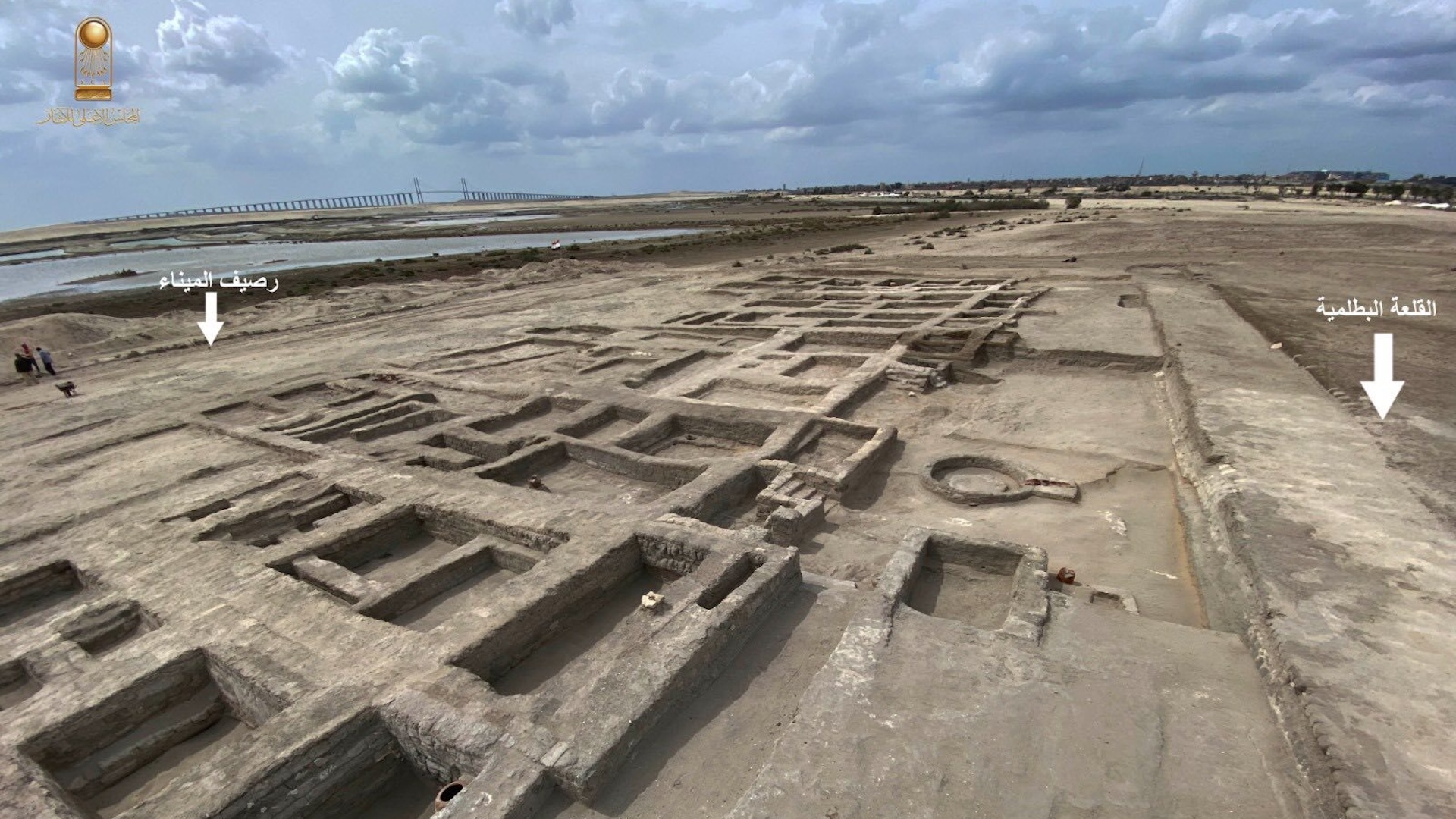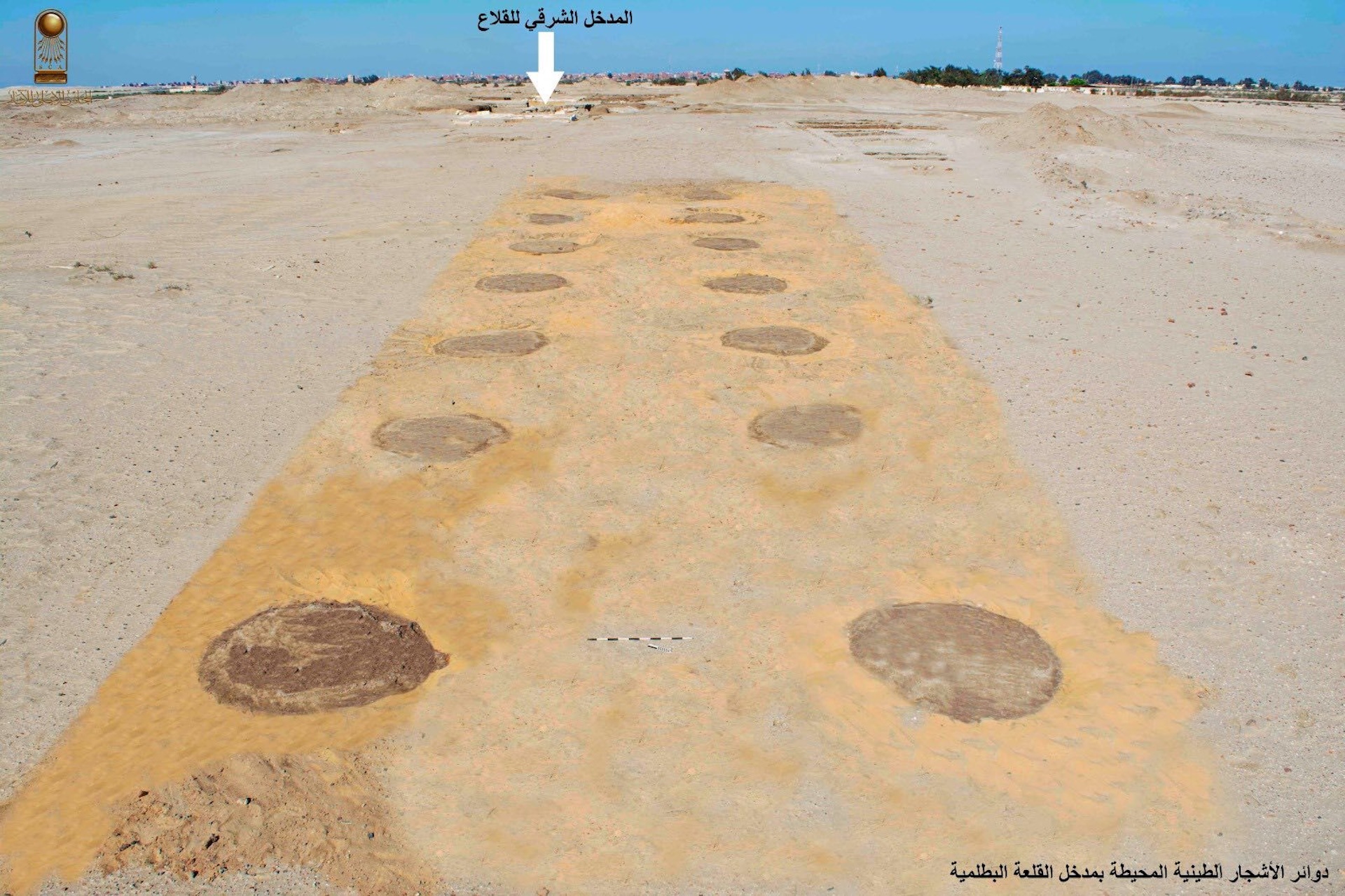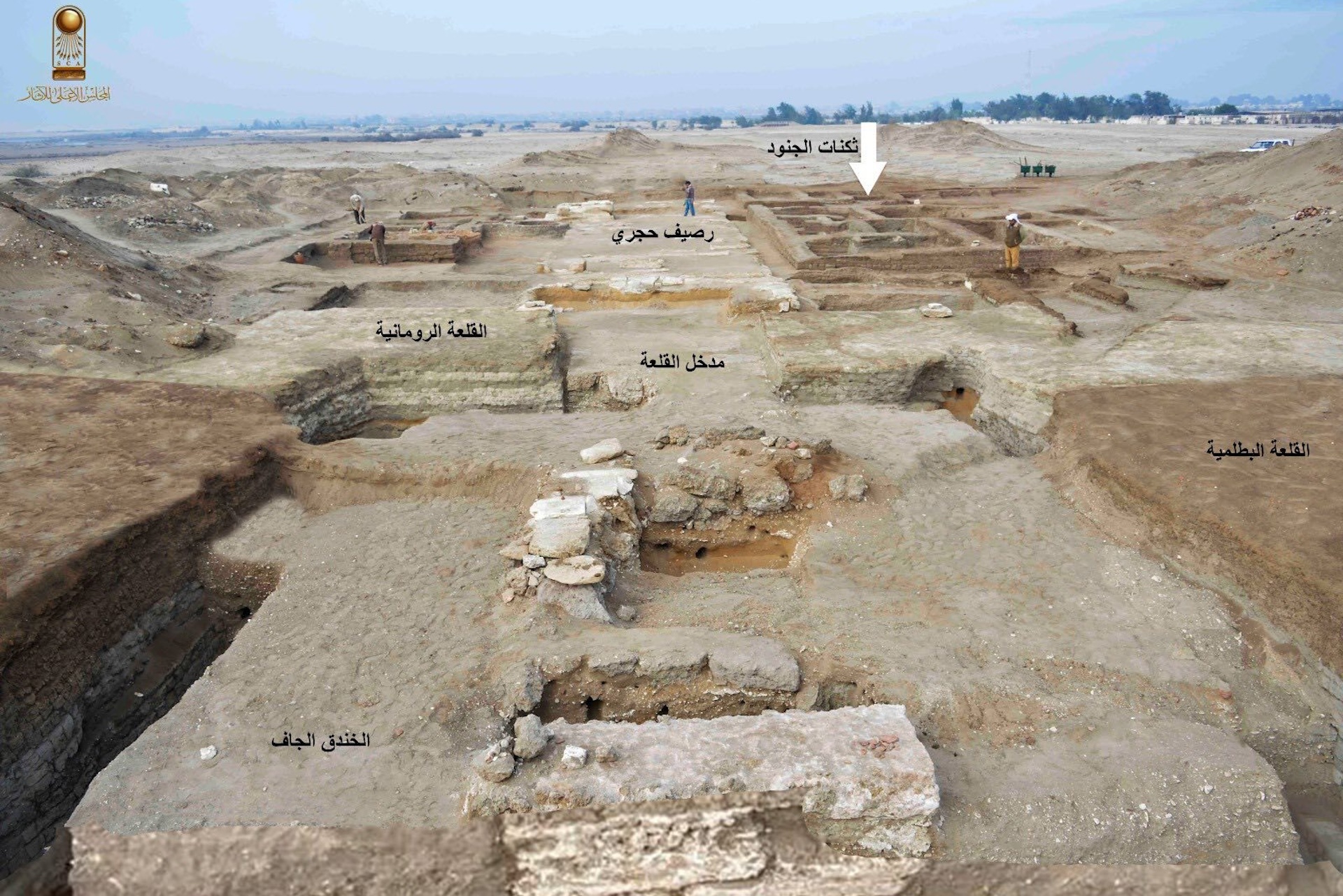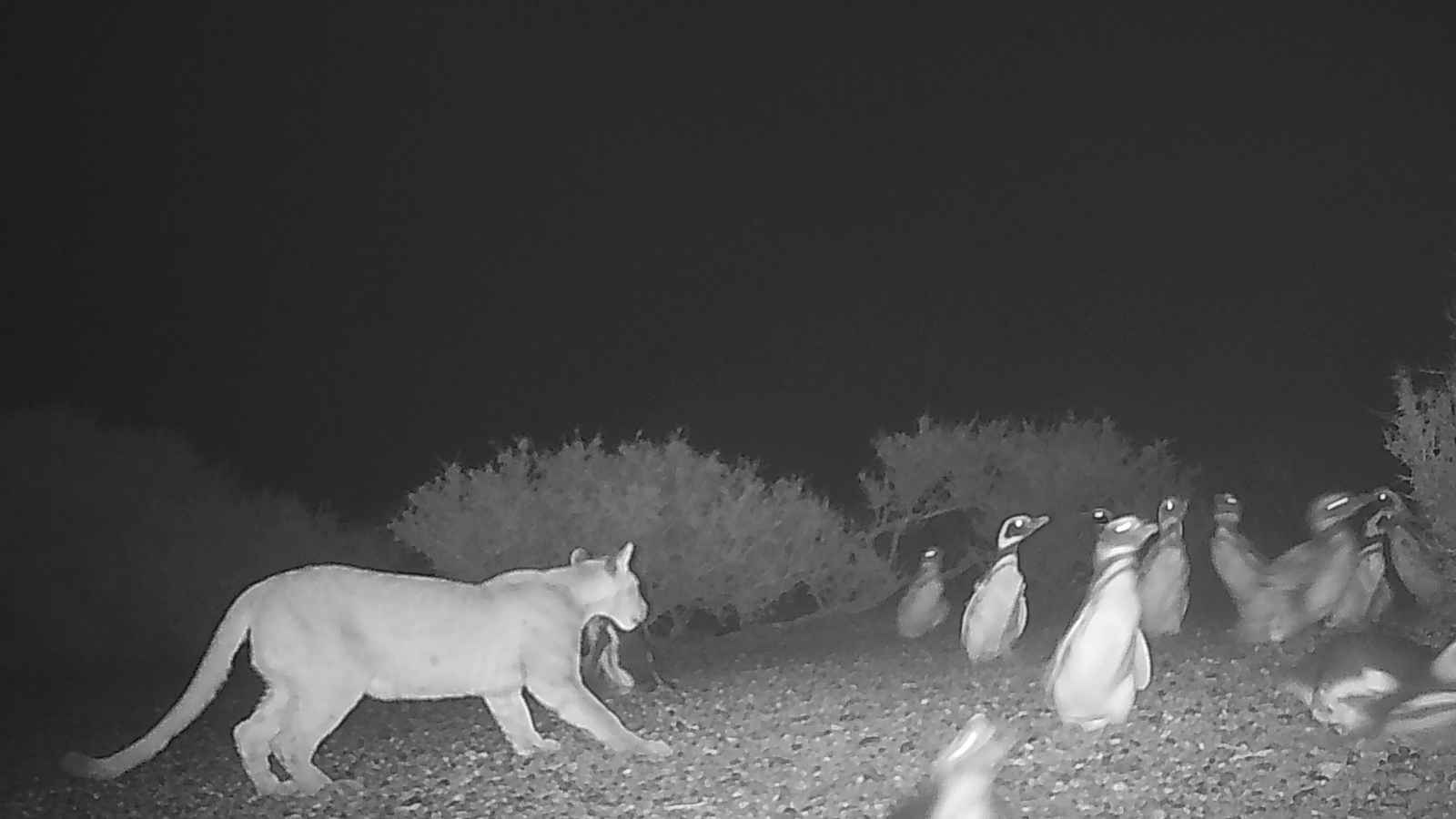Archaeologists unearth tree-lined walkway that led to ancient Egyptian fortress in Sinai Desert
The ancient Egyptian fortress was in use around 2,000 years ago in the Sinai Desert.

A large ancient Egyptian fortress in the northern Sinai Desert had an elaborate landscape of 500 trees leading to its entrance more than 2,000 years ago, new excavations reveal.
Archaeologists made the finding while uncovering more of a fortress that was rebuilt and modified over several centuries. The existence of the fortress has been known for decades. However, new finds by archaeologists from Egypt's Ministry of Tourism and Antiquities shed light on what the fortress was like more than two millennia ago.
Located at the site of Tell Abu Saifi, the fortress was in use during the Ptolemaic period (circa 304 to 30 B.C.), when Ptolemy I — a general of Alexander the Great — and his descendants ruled Egypt, and the Roman period (circa 30 B.C. to A.D. 642), when Egypt was a province in the Roman Empire.
They found that during the Ptolemaic period, there were 500 planting circles surrounded with clay on both sides of a road that led to the entrance of the fortress. These would have contained trees, the ministry said in a translated statement. It’s not clear what exactly the climate was like in the Sinai Desert around 2,000 years ago.
They also found that, during Ptolemaic times, the fortress was surrounded by a trench (a moat) that was more than 6.6 feet (2 meters) deep. This trench would have helped soldiers defend the fortress. The Ptolemies faced a number of adversaries at different times, including the Seleucid Empire, the Roman Republic and rebel groups operating in Egypt.
Related: Ancient Egyptians drew the Milky Way on coffins and tombs, linking them to sky goddess, study finds

These circles held trees that led up to the entrance of the fortress.

The fortress was in use for centuries and was rebuilt and renovated over time.
The planting circles are an interesting find, Elizabeth Macaulay, a classics professor at the City University of New York Graduate Center who was not involved in the excavation, told Live Science in an email.
Get the world’s most fascinating discoveries delivered straight to your inbox.
"It is certainly possible that clay planting circles could have been used to plant trees," Macaulay said. "500 trees would have been a lot, but we have evidence from papyri and archaeology for the large-scale cultivation of plants — vines, fruits, trees — in Ptolemaic Egypt." She noted that if the excavation team uncovers the remains of roots, it would help confirm that these circles were used for planting. It might also allow for the identification of the tree species.
The archaeologists made several other finds, including living quarters of soldiers and perhaps their families. In addition, they unearthed a stretch of road that was 328 feet (100 m) long, 36 feet (11 m) wide, and paved with limestone slabs. It would have been used for military units traveling to the fortress.
In an unexpected finding, archaeologists unearthed four corners of a structure that may be from an even earlier period. It's possible that this structure is also a fortress, but the team has not been able to date it or verify its purpose.
Live Science contacted the archaeologists who excavated the site but did not hear back by the time of publication.
Ancient Egypt quiz: Test your smarts about pyramids, hieroglyphs and King Tut

Owen Jarus is a regular contributor to Live Science who writes about archaeology and humans' past. He has also written for The Independent (UK), The Canadian Press (CP) and The Associated Press (AP), among others. Owen has a bachelor of arts degree from the University of Toronto and a journalism degree from Ryerson University.
You must confirm your public display name before commenting
Please logout and then login again, you will then be prompted to enter your display name.


